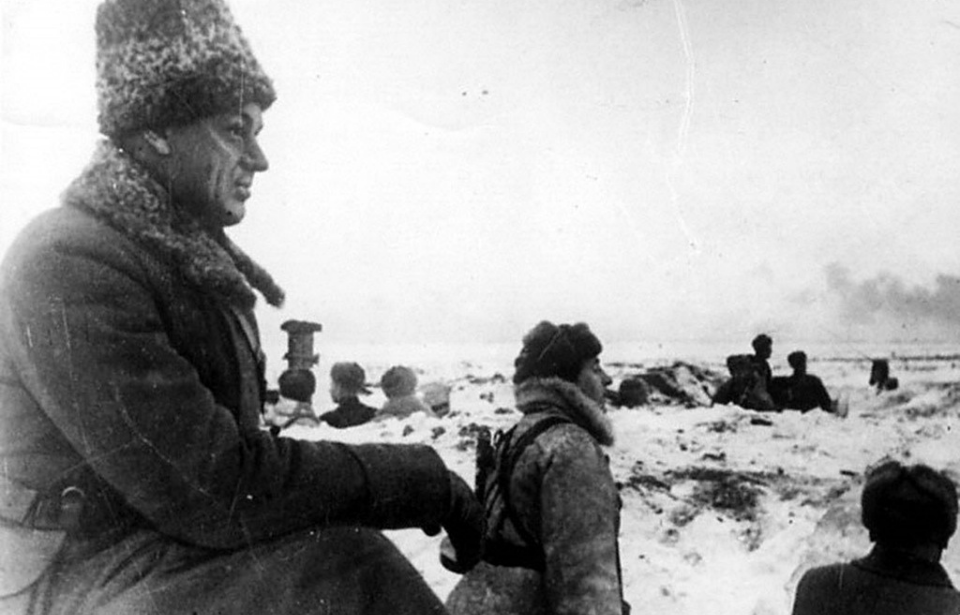Russia during the first half of the 20th century was both massive and constantly engaged in military conflict. One man who made a name for himself during the fighting was Konstantin Rokossovsky, who by the end of his military career was made the marshal of two different country’s armies.
Konstantin Rokossovsky’s early life and entry into the military
Konstantin Rokossovsky was born in Warsaw, Poland on December 21, 1896. At the time, the country was part of the Russian Empire. He grew up relatively well off, as his family were members of the Polish nobility and his father worked as an inspector for the Warsaw Railways. Unfortunately, both he and Rokossovsky’s mother had both passed by the time he was 14 years old.
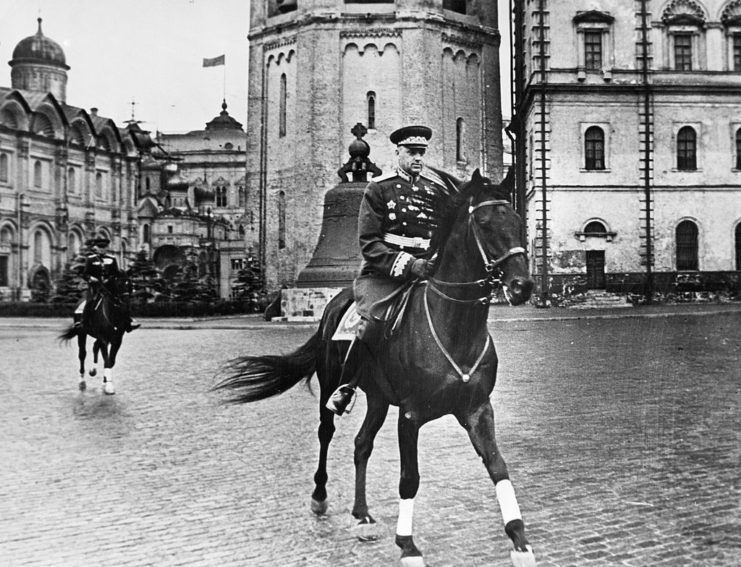
As a youth, he trained as a stonemason. When the First World War began, Rokossovsky enlisted with the Russian Imperial Army and was assigned to the 5th Kargopol Dragoon Regiment as a cavalry soldier, falling in line with previous generations of his family.
It didn’t take long for him to distinguish himself as a talented soldier, and he ended the conflict having reached the rank of junior non-commissioned officer.
Distinguishing himself during the Russian Civil War
Toward the end of World War I, Russia became embroiled in a civil war. Rokossovsky, like many other Russians, kept on fighting. He joined the Bolsheviks in 1917 and became a member of the Red Army. During the conflict, he regularly commanded calvaries, and was wounded in the shoulder while fighting campaigns against Aleksandr Kolchak‘s White Guard armies in 1919.
He later received the Order of the Red Banner, the highest honor presented by the Russian Army at the time.
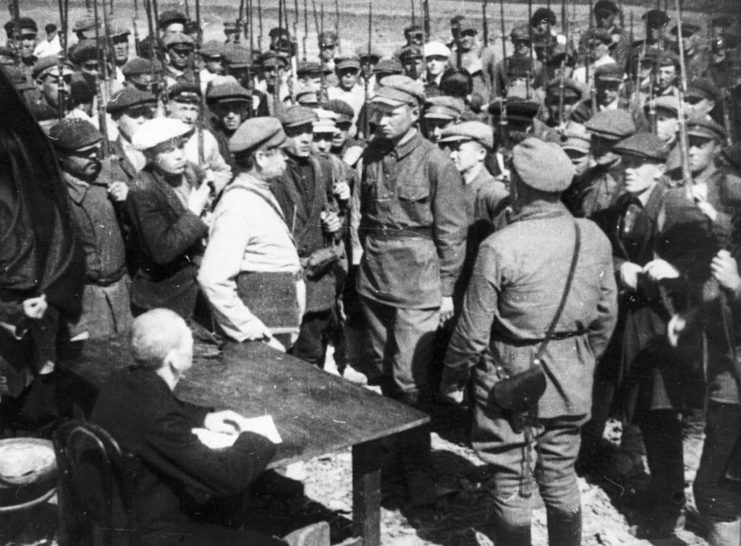
In 1921, Rokossovsky wound up in Mongolia, aiding the Mongolian People’s Republic in repeling Hungarian Roman von Ungern-Sternberg, who believed he was the reincarnation of Genghis Khan. The mission was successful, and the Mongolian and Russian forces were able to capture the country’s capital.
Konstantin Rokossovsky is arrested and accused of being a traitor
Despite his long and distinguished military career, Konstantin Rokossovsky could not avoid being swept up in Joseph Stalin‘s Great Purge. He was arrested and accused of being a traitor and a spy, with Stalin using his Polish background and past associations as evidence.
While in prison, Rokossovsky refused to sign a statement admitting to his “crimes.” This led to regular beatings and mock shooting ceremonies. Following his trial, he was sent to Kresty Prison in Leningrad, where he remained until March 1940.
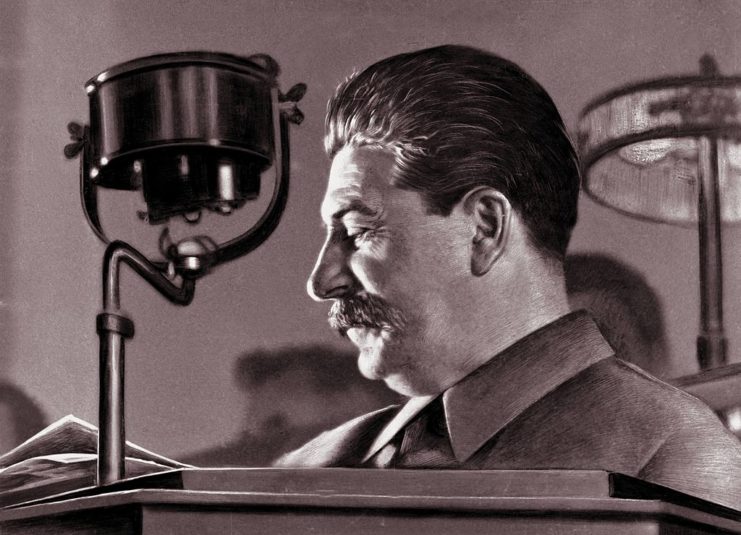
His grandson, Col. Konstantin Rokossovsky Vilevich, later explained:
“The evidence was based on the testimony of Adolph Yushkevich, a colleague of my grandfather in the Civil War. But my grandfather knew very well that Yushkevich died in Perekop. He said that he would sign [a confession] if Adolph was brought for a confrontation. They looked for Yushkevich and found that he had died long before.”
The Russians needed his expertise
When the Germans invaded Russia during the Second World War, Konstantin Rokossovky, then out of prison, joined what Russia called “The Great Patriotic War.” He put his past accusations as a spy and traitor behind him and rose through the ranks of the Red Army. His fingerprints were all over some of the biggest battles of the conflict, including the battles of Brody, Smolensk and Moscow.
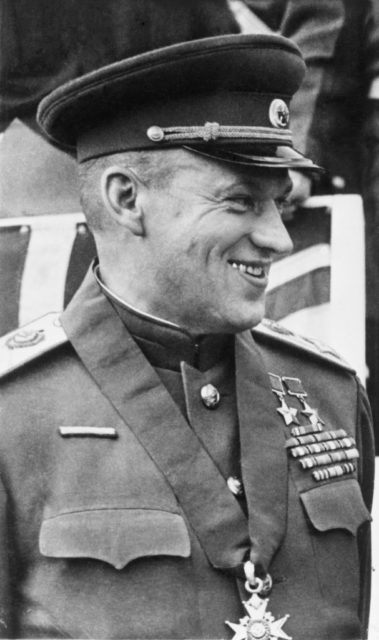
Rokossovsky was involved in the planning of Operation Bagration and repeatedly butted heads with Stalin over strategy. Stalin wanted to keep the Soviet practice of breaking through the German line from a singular place, while Rokossovsky argued for a two-point breakthrough. In the end, Stalin went with Rokossovky’s plan and Russia won a crushing victory.
Thanks to this success, Rokossovsky was named the Marshal of the Soviet Union. He was awarded the Order of the Bath in 1945 and later named the Commanding Officer of the Victory Parade in Moscow.
Konstantin Rokossovsky’s later military career and retirement
In 1949, Stalin paid Konstantin Rokossovsky back by making him the Marshal of Poland, as well as the Polish Minister of Defense. While he worked hard in this post, securing commanding positions for thousands of Soviet officers within the Polish military, Rokossovsky never really felt at home. He once explained, “In Russia, they say I’m a Pole, in Poland they call me Russian.”
Rokossovsky played a heavy role in the Sovietization of Poland.
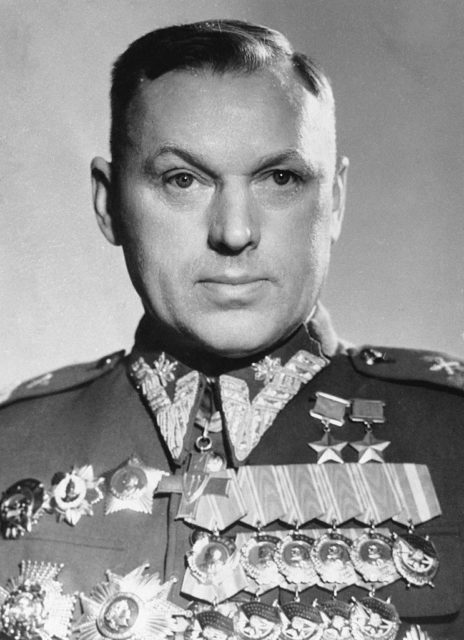
More from us: Adrian Carton de Wiart: The Unkillable Solider Who Frankly Enjoyed War
Rokossovsky officially resigned from the military in 1962, four years after being named the chief inspector of the Ministry of Defence, and spent much of his retirement hunting. He passed away in 1968, at the age of 71, and his ashes were placed at the Kremlin Wall Necropolis on Red Square.
